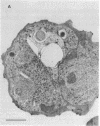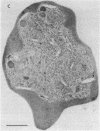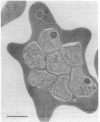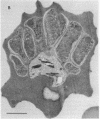Abstract
A culture line of Plasmodium falciparum (FCR-3/Gambia) was used to select and place in culture cells containing a single parasite. The method depends on examination of minute droplets of dilute cell suspensions with oil immersion phase-contrast microscopy. Droplets found to contain a single parasite were maintained under appropriate culture conditions until detectable numbers of parasites were present (generally by day 21). Of nine clones that grew up, seven were knobless and two were knobby. The clones differed somewhat in chloroquine sensitivity. Their 50% inhibition point under one set of conditions in vitro ranged from 0.02 to 0.06 micrograms of base per ml, compared with only 0.003 micrograms for the highly sensitive line FCR-8/West Africa. All three tested clones formed gametocytes under appropriate in vitro conditions.
Full text
PDF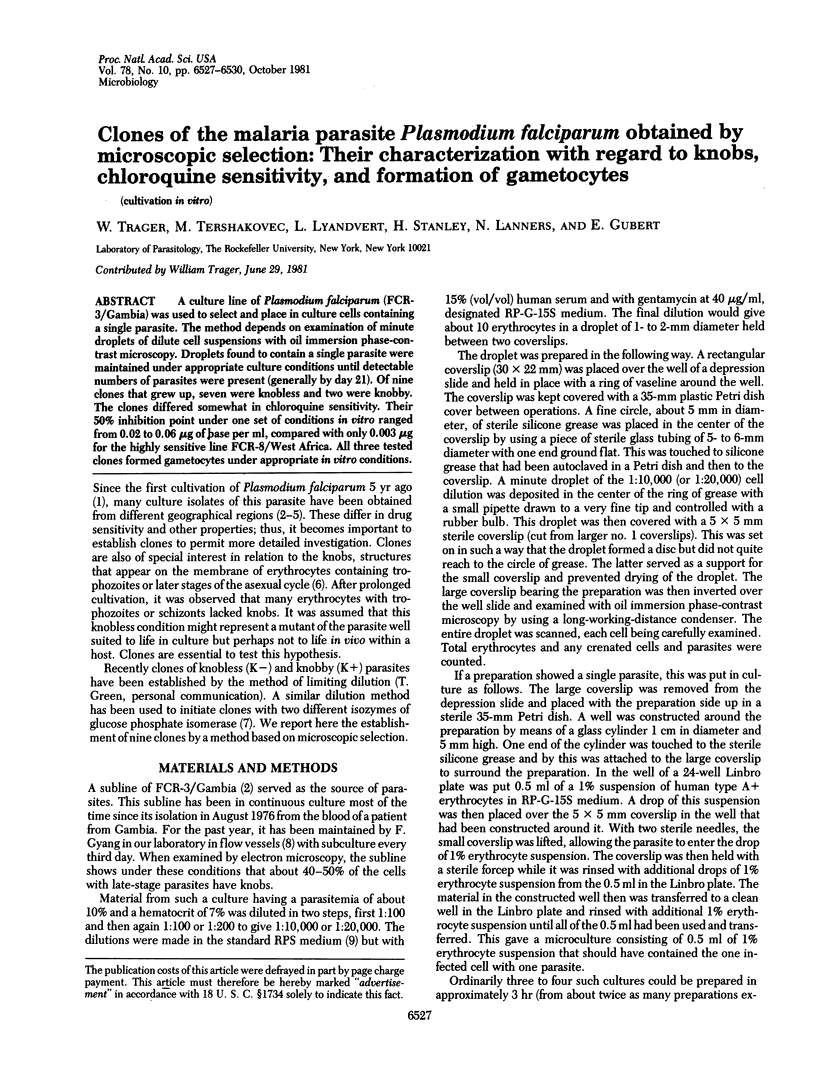
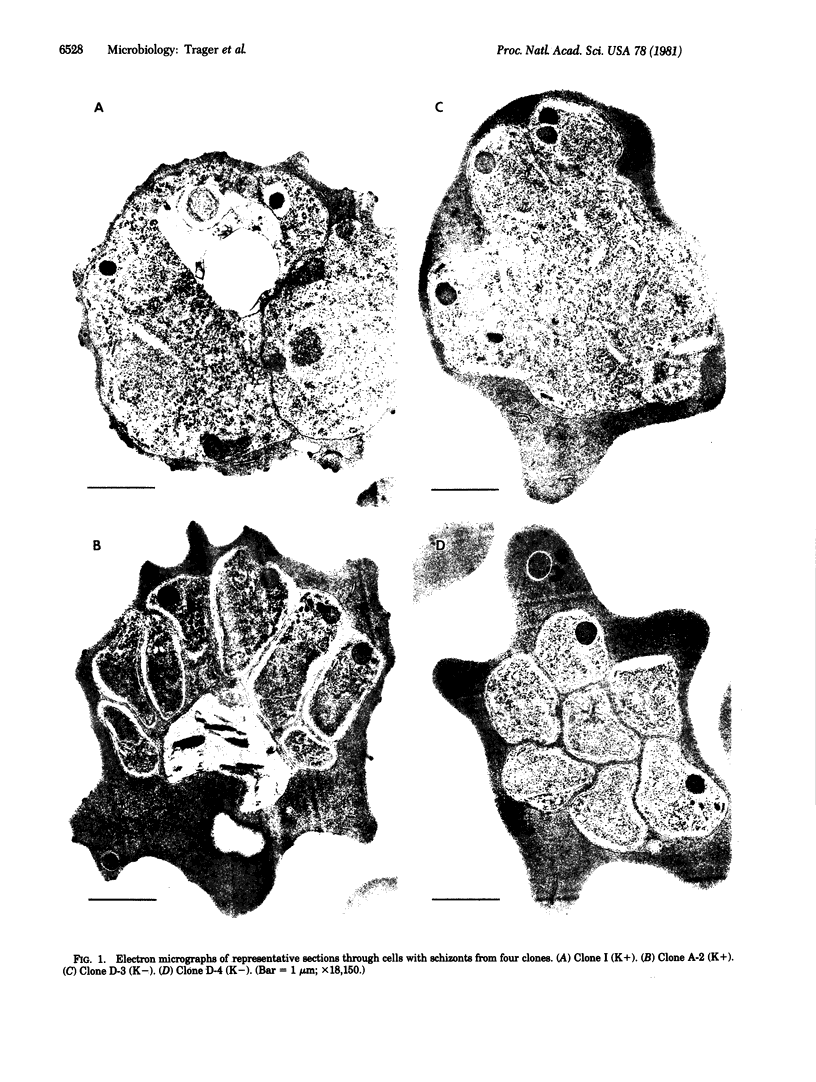
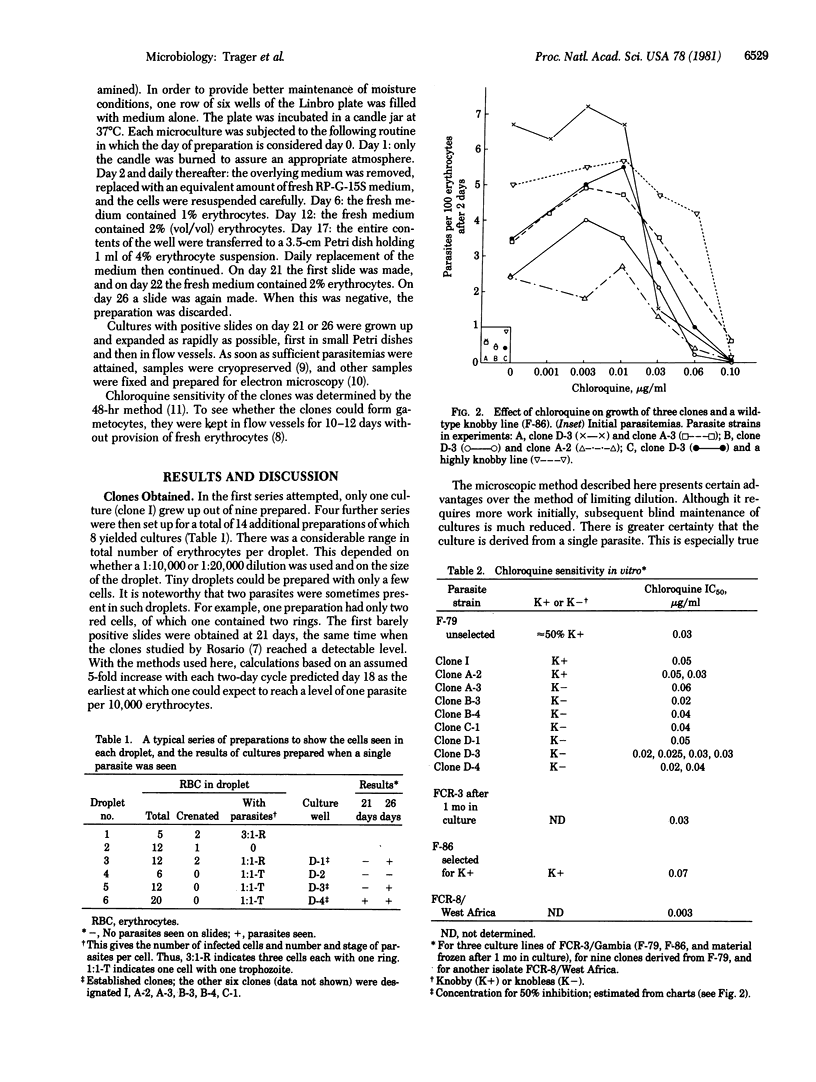
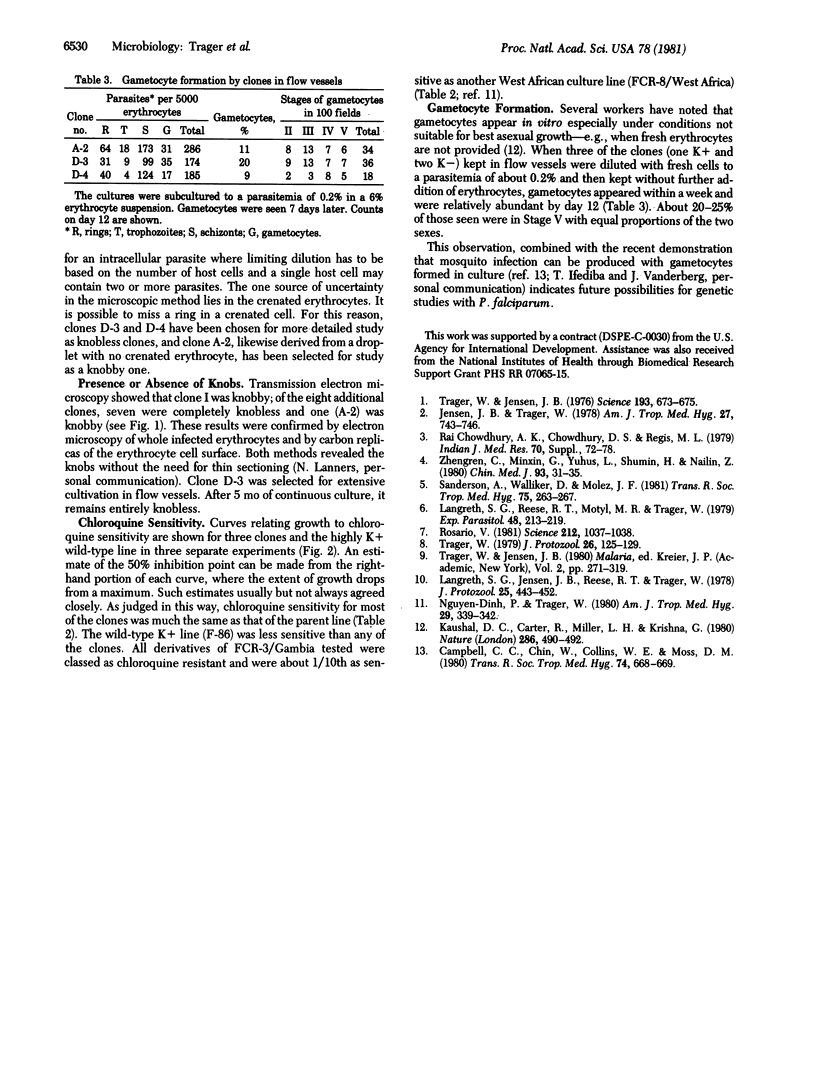
Images in this article
Selected References
These references are in PubMed. This may not be the complete list of references from this article.
- Campbell C. C., Chin W., Collins W. E., Moss D. M. Infection of Anopheles freeborni by gametocytes of cultured Plasmodium falciparum. Trans R Soc Trop Med Hyg. 1980;74(5):668–669. doi: 10.1016/0035-9203(80)90163-7. [DOI] [PubMed] [Google Scholar]
- Chen Z. R., Gao M. X., Li Y. H., Han S. M., Zhang N. L. Studies on the cultivation of erythrocytic stage Plasmodium in vitro. Chin Med J (Engl) 1980 Jan;93(1):31–35. [PubMed] [Google Scholar]
- Chowdhuri A. N., Chowdhury D. S., Regis M. L. Simultaneous propagation of P. malariae and P. falciparum in a continuous culture. Indian J Med Res. 1979 Dec;70 (Suppl):72–78. [PubMed] [Google Scholar]
- Jensen J. B., Trager W. Plasmodium falciparum in culture: establishment of additional strains. Am J Trop Med Hyg. 1978 Jul;27(4):743–746. doi: 10.4269/ajtmh.1978.27.743. [DOI] [PubMed] [Google Scholar]
- Kaushal D. C., Carter R., Miller L. H., Krishna G. Gametocytogenesis by malaria parasites in continuous culture. Nature. 1980 Jul 31;286(5772):490–492. doi: 10.1038/286490a0. [DOI] [PubMed] [Google Scholar]
- Langreth S. G., Jensen J. B., Reese R. T., Trager W. Fine structure of human malaria in vitro. J Protozool. 1978 Nov;25(4):443–452. doi: 10.1111/j.1550-7408.1978.tb04167.x. [DOI] [PubMed] [Google Scholar]
- Langreth S. G., Reese R. T., Motyl M. R., Trager W. Plasmodium falciparum: loss of knobs on the infected erythrocyte surface after long-term cultivation. Exp Parasitol. 1979 Oct;48(2):213–219. doi: 10.1016/0014-4894(79)90101-2. [DOI] [PubMed] [Google Scholar]
- Nguyen-Dinh P., Trager W. Plasmodium falciparum in vitro: determination of chloroquine sensitivity of three new strains by a modified 48-hour test. Am J Trop Med Hyg. 1980 May;29(3):339–342. doi: 10.4269/ajtmh.1980.29.339. [DOI] [PubMed] [Google Scholar]
- Rosario V. Cloning of naturally occurring mixed infections of malaria parasites. Science. 1981 May 29;212(4498):1037–1038. doi: 10.1126/science.7015505. [DOI] [PubMed] [Google Scholar]
- Sanderson A., Walliker D., Molez J. F. Enzyme typing of Plasmodium falciparum from African and some other Old World countries. Trans R Soc Trop Med Hyg. 1981;75(2):263–267. doi: 10.1016/0035-9203(81)90331-x. [DOI] [PubMed] [Google Scholar]
- Trager W., Jensen J. B. Human malaria parasites in continuous culture. Science. 1976 Aug 20;193(4254):673–675. doi: 10.1126/science.781840. [DOI] [PubMed] [Google Scholar]
- Trager W. Plasmodium falciparum in culture: improved continuous flow method. J Protozool. 1979 Feb;26(1):125–129. doi: 10.1111/j.1550-7408.1979.tb02747.x. [DOI] [PubMed] [Google Scholar]



